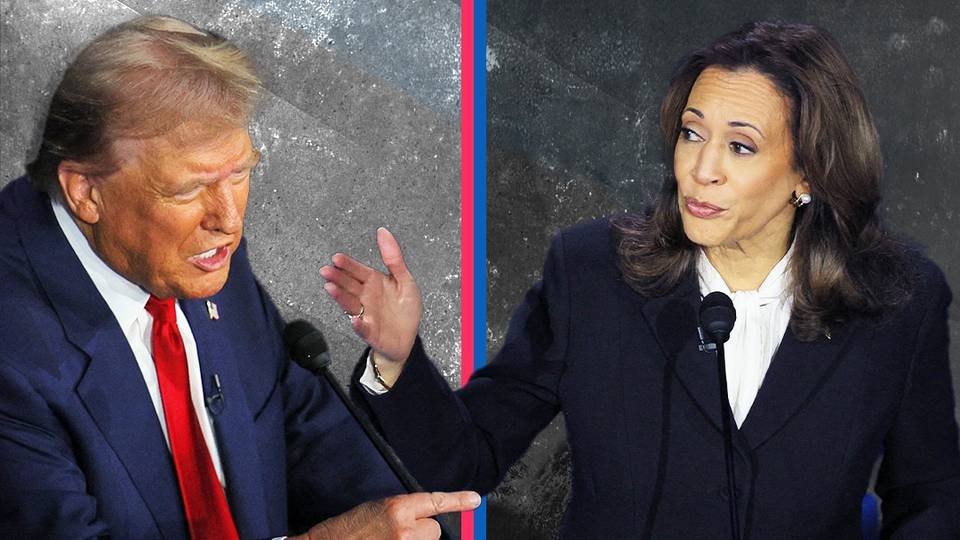Sport
Dollar
38,2587
0.11 %Euro
44,1401
0.1 %Gram Gold
1.173,9700
1.32 %Quarter Gold
6.947,4100
0 %Silver
40,4800
0.76 %The US election has entered homestretch, with Vice President Kamala Harris facing off against former President Donald Trump.

By Brian Okoth
On Tuesday, November 5, Americans will elect their 47th president.
In the nail-biting clash, Vice President Kamala Harris of the Democratic Party will face off against former President Donald Trump of the Republican Party.
The other three presidential candidates are 39-year-old political activist Chase Oliver of the Libertarian Party, 74-year-old physician Jill Stein of the Green Party, and 71-year-old independent candidate, Cornel West.
But 60-year-old Harris and 78-year-old Trump are said to be the front-runners.
Early voting
Approximately 244 million Americans are eligible to vote.
An October 25 New York Times opinion poll shows Harris and Trump are tied at 48% each.
In the US, early voting is allowed through in-person or mail voting. Tens of millions of Americans have already voted.
Besides the presidency, the November 5 elections will also seek to fill all the 435 seats in the House of Representatives, and some 34 out of 100 Senate seats.
Profiles of main candidates
Harris, who has served as vice president for four years, is a former senator, California attorney-general, and San Francisco prosecutor.
She hopes to become the first female president of the US.
Former President Trump is seeking election for the third consecutive time — winning in 2016, and losing in 2020.
He is the 45th president of the US, businessman, and former reality TV star.
Campaign promises
But, what have the two main candidates promised voters?
Harris's economic plans include tax cuts, regulating prices of commodities, more affordable housing, and a new child tax credit. She also seeks to double the federal minimum wage, currently at $7.25 per hour.
Trump has vowed to cut taxes, impose sweeping tariffs on imported goods, and protect social security. He has also pledged to "keep American jobs for American workers."
The United States' unemployment rate stands at 4.1%, with about 7 million people out of jobs.
Immigration
Trump has also pledged what he calls the "biggest deportation operation in US history."
Harris, on the other hand, supports a proposal to hire thousands of new border security agents and close the border in case of immigration surge.
President Joe Biden quit the United States' presidential race midway on July 21 after pressure from Democrat politicians and his supporters.
Giving reasons for stepping down, the president said in August he feared his candidacy would be a "real distraction" for Democrats and that his main priority was to "defeat" Trump in the November poll.
Harris defeat 'easier': Trump
After announcing his withdrawal, Biden endorsed Vice President Harris to succeed him as the Democratic Party candidate, and Harris accepted the endorsement.
The Democratic Party would later, in early August, officially nominate Harris for her to take on Trump in the November presidential election.
After Harris was unveiled as his main challenger, Trump said it would be "easier" to defeat Harris than it would have been against Biden.
US population demographics
In terms of population, the White community in the US is the largest, at nearly 58%; followed by Hispanic or Latino, at nearly 19%; and then African American at 12%.
Now, how is the US president elected?
The US has 50 states, and the capital Washington DC.
Each state has its representatives to the Electoral College called electors, who choose the president.
Electoral College
But, how are electors chosen?
First, there is the popular vote, which refers to the vote citizens directly cast for presidential candidates.
For instance, if a candidate wins popular vote in California State, he or she takes all the Electoral College votes there. California has 54 Electoral College votes.
If another wins Florida's popular vote, he or she takes all the 30 Electoral College votes there.
The magic number: 270
The states of Maine and Nebraska, however, assign electors using a proportional system.
Each of the 50 states gets as many electors as the number of its Congressional seats. That means there are some states with more electors than others.
Washington DC, which has no representation in Congress, has three electoral votes, bringing the total number of electors to 538.
A presidential race winner needs more than half of 538 — that is, at least 270 Electoral College votes — to win.
➤Click here to follow our WhatsApp channel for more stories.
Comments
No comments Yet
















Comment